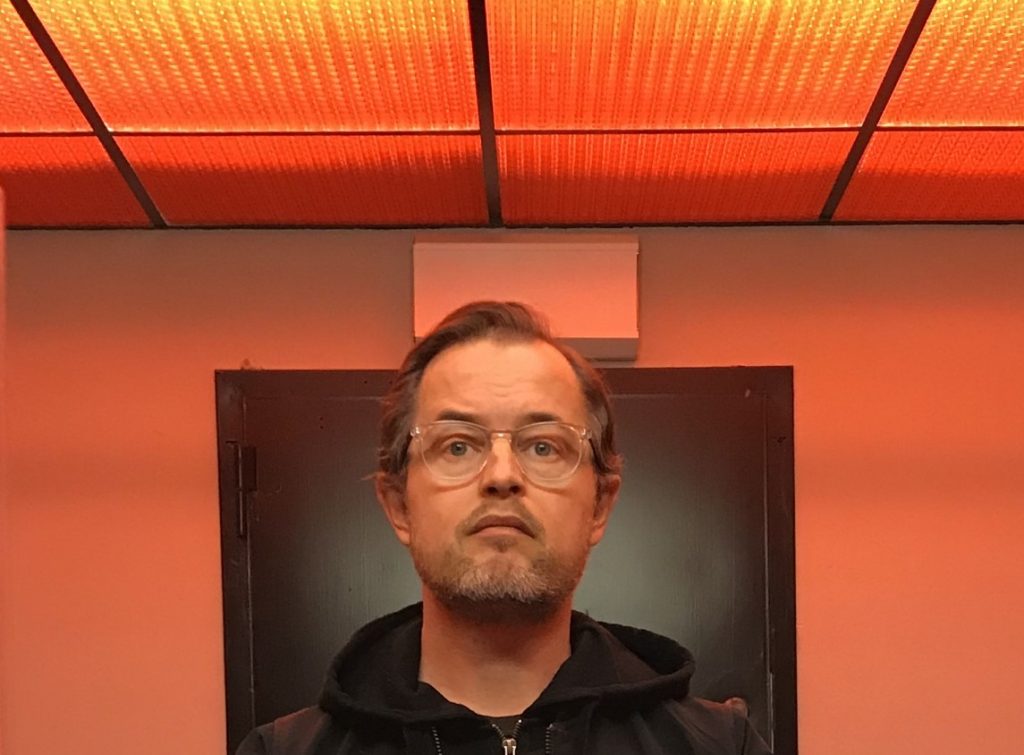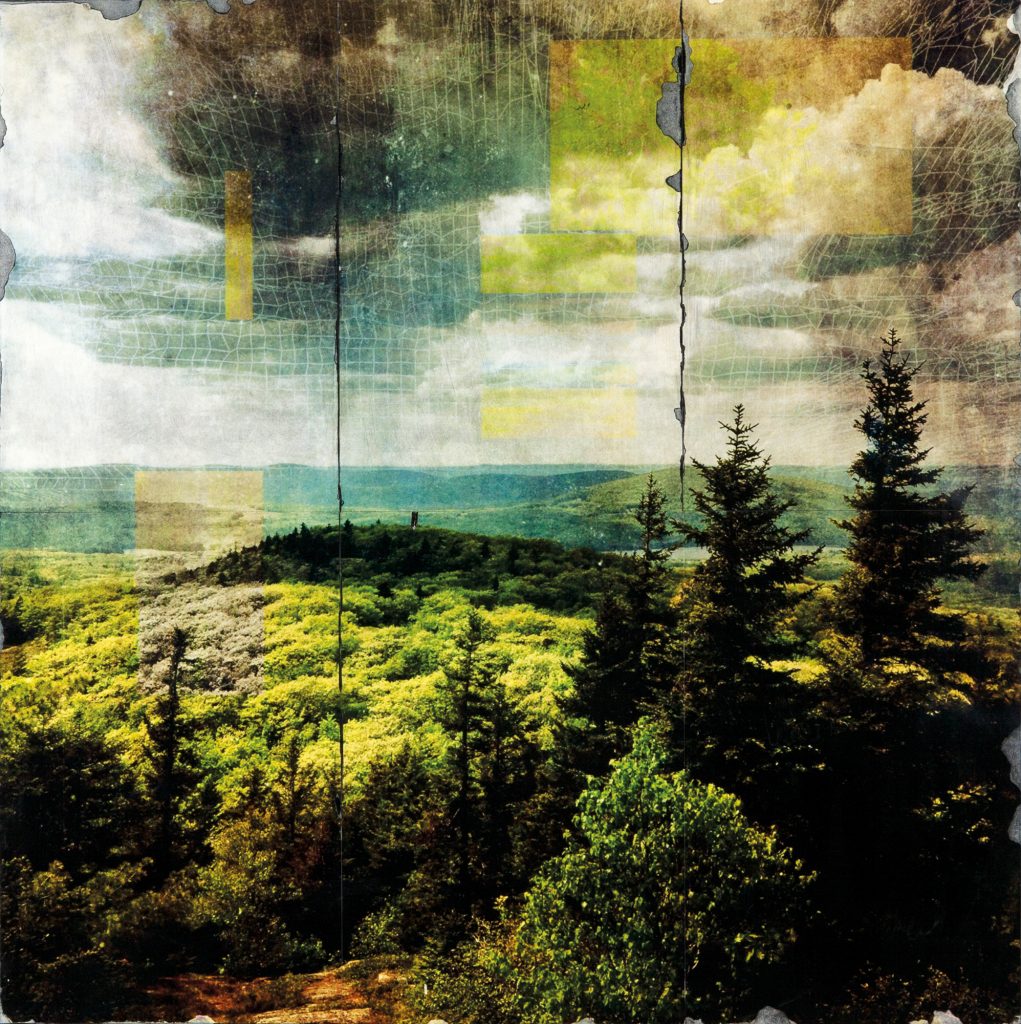Eleanor Oakes: Photographing Absences


Whether capturing vibrant layers of paint covering formerly graffiti-filled walls to trace an ever-evolving urban environment, documenting curious stains on lush fabrics or using the dust, dirt and hair from a studio floor to create unusual portraits, photographer Eleanor Oakes deftly manipulates her chosen medium to represent the ephemeral. Despite her undeniably varied series, Oakes’ photography consistently examines Susan Sontag’s assertion that “a photograph is both a pseudo-presence and a token of absence.” Mining the seemingly contradictory ability of photography to record both presence and absence, Oakes preserves fleeting moments, examining time, memory and its lingering effect on places.
Born in New York, Oakes recently moved to Detroit from California, finding the city’s unique landscape and industrial environment an enduring source of creative inspiration. As seen in her ongoing series Removed, even the walls of Detroit–in Oakes’ hands–tell a captivating story of change and accidental artistry in the Rust Belt city. Not only engaging with her newfound home from behind her camera, Oakes is also the founder of Darkroom Detroit, which intends to provide a shared space for photography and education to the Detroit community.
A passionate photographer, Oakes spoke with us about finding inspiration in Detroit, her continued fascination with photographing absence and the motivation behind starting Darkroom Detroit.

Your “Removed” series investigates the paint applied on the walls and building facades in Detroit in order to erase graffiti. How did you begin this series?
I first really started noticing painted-over graffiti when I was living in California while at Stanford. The buildings are so colorful that the layered pastiches would become these really interesting takes on color and palette. It’s something I thought about doing then, but when we moved to Detroit it developed additional layers. There was no longer any attempt to match color so the canvases became wilder. It is also a really interesting way to track how the city is recovering. Certain areas of the city will be totally graffiti-laden. Then slowly, they start to get covered and eventually, a whole building gets painted one color, gets bought and becomes gentrified, or revitalized, or whatever you want to call it. It’s evolved into an interesting data collection project as well.


I was particularly struck by how the contrasting layers of paint resemble abstract art. They almost look like Rothko’s paintings with their large flat rectangles of nearly overlapping color.
Yes, definitely! I have always noticed them as these abstract expressionist canvases that present themselves around a city block. They are these found acts of painting that lie in the background of our everyday lives. For me, there’s also this irony to it that I find so comical–it’s this secondary gestural act used to try to cover something, but it only makes it more obvious. It’s just as visible. You’re not erasing or removing anything. You’re just adding to the composition.

Absence is a significant theme in many of your series including “Removed” and “Residual Loop”, which features mysteriously stained fabric. Both series ask the viewer to question what was there or what happened previously. What is the role of absence in your photographs?
I think all artists use their own medium to dive into whatever internal issues they think about. Representing absence is something that has taken on a strong theme in my work. Photography is this really beautiful enigma in that you take a picture of something to show it, meaning you have to have something physically present to actually record it, but the photograph itself goes on to be this implication of absence later. If somebody dies or something’s not there anymore, then all you have is that photographic document that exists and lives on in the place of the thing that’s gone. There’s this interesting duality that constantly shifts. In “Residual Loop,” I was really interested in the idea of how you actually represent absence. How do you take a picture of something that isn’t physically there and that can be read in a variety of ways? Depending on the viewer, they’re bringing something personal to whatever the stain is.
Detroit looms large in the American cultural imagination from urban blight to the current influx of artists moving to the city. How does Detroit inspire your work?
It’s hugely inspiring. It’s obviously inspiring for many photographers because you have this ruin porn narrative that is super pervasive, which I have a lot of my own independent feelings about. I have done work in an abandoned psychiatric institution before so I totally get the appeal of that beautiful physical ruin. As an urban explorer, seeing these places is fascinating but in terms of making work, I’m interested in getting at a narrative that is maybe a little more complex. I think it’s been particularly interesting being new to the city. There’s this beautiful ignorance that I have driving around with fresh eyes. I see things very differently when I’m new to a place than when I’ve been there for a long time. Ironically, I usually find that I much prefer making work the places I’ve been for a long time and have adjusted to. For some reason, I’ve found the opposite to be true in Detroit and the project itself has been a kind of welcoming ritual to the city–both in the exploration and the people I’ve met. I meet many people being out with my camera that I don’t think I would have the chance to meet otherwise.

In addition to shooting a wide range of subject matter, you also seem to enjoy experimenting with your artistic practice. For example, you use black-and-white negatives in “2 Years In Barnes Hall” to depict the accumulated sweepings from your studio floor as amorphous star-like forms. What is your photographic process?
I predominantly shoot film, whether black-and-white or color. I’m very much invested in that materiality. For me, there’s a real joy to have that level of tactile engagement in my practice. I find digital to be in some ways overwhelming, and in other ways intangible. I love the physical interaction with the medium. For “Barnes Hall,” I was using 8×10” negative sheet film. When you’re making something on a black-and-white negative, you can’t have any light–not even the red light in the darkroom. I learned to make those literally by feel, judging how different materials would act when I blew them around or splattered them in certain ways. There was an almost painterly physical manipulation of the material.

Now I’m shooting large format 4×5” color negatives around Detroit. That’s not the camera that most people see in the outer neighborhoods. It’s not something they recognize. I think some people think I’m surveying. Sometimes people recognize it’s a camera, but a very different kind of camera than the digital ones people carry around. I think it possibly leads to more interactions because people are curious, and because I have to stay in one place longer to make a picture.

Aside from your own photography, you also founded Darkroom Detroit. What motivated you to start Darkroom Detroit?
For me, it was getting to Detroit and seeing a void. Whenever I move to a new city, I’m always like, “Great, where is a darkroom I can use? Where can I get my film processed? Where can I get photos printed?” I was looking for these things I need, or want , but not necessarily finding them on my terms. There are some really great places that do one or some of those things, but there’s no collective space where that’s all happening. I was also thinking about this ruin porn narrative and thinking about all the other things that exist in Detroit that nobody sees because nobody photographs them. People coming from out-of-town flock to the Packard Plant, but aren’t hanging out with people who are about to get evicted from their homes. There’s a barrage of things happening in this city–both good and bad–that aren’t given a visual voice. A really big part of Darkroom Detroit is to make it an educational community where there’s free community classes for adults and kids who can come and learn how to make and process their own photographs. Then they can take that skill and do whatever they want with it. They can picture their own world. I don’t feel I have the right to tell anyone’s story in Detroit. I think they should have the ability to tell their own stories and share their own experiences.
We’re going to need capital at some point to get a space. For the time being, I have access to a darkroom so I’ve started working with people–families or individuals–who might be interested in a camera. I go and give them the camera, teach them how to use it and let them keep it for a month. Then, I’ll process the film, make prints and contact sheets for them. The Tricycle Collective helped me with that as one of my first partners. Michele Oberholtzer [from The Tricycle Collective] works with families who are getting evicted from their homes, helping them raise funds to buy their homes back at auction. She works closely with some families in certain neighborhoods and she gave me my first family to work with, which was amazing. We’re still thinking of ways we can help spread our photography love without having a tangible space or a lot of funding.









Responses